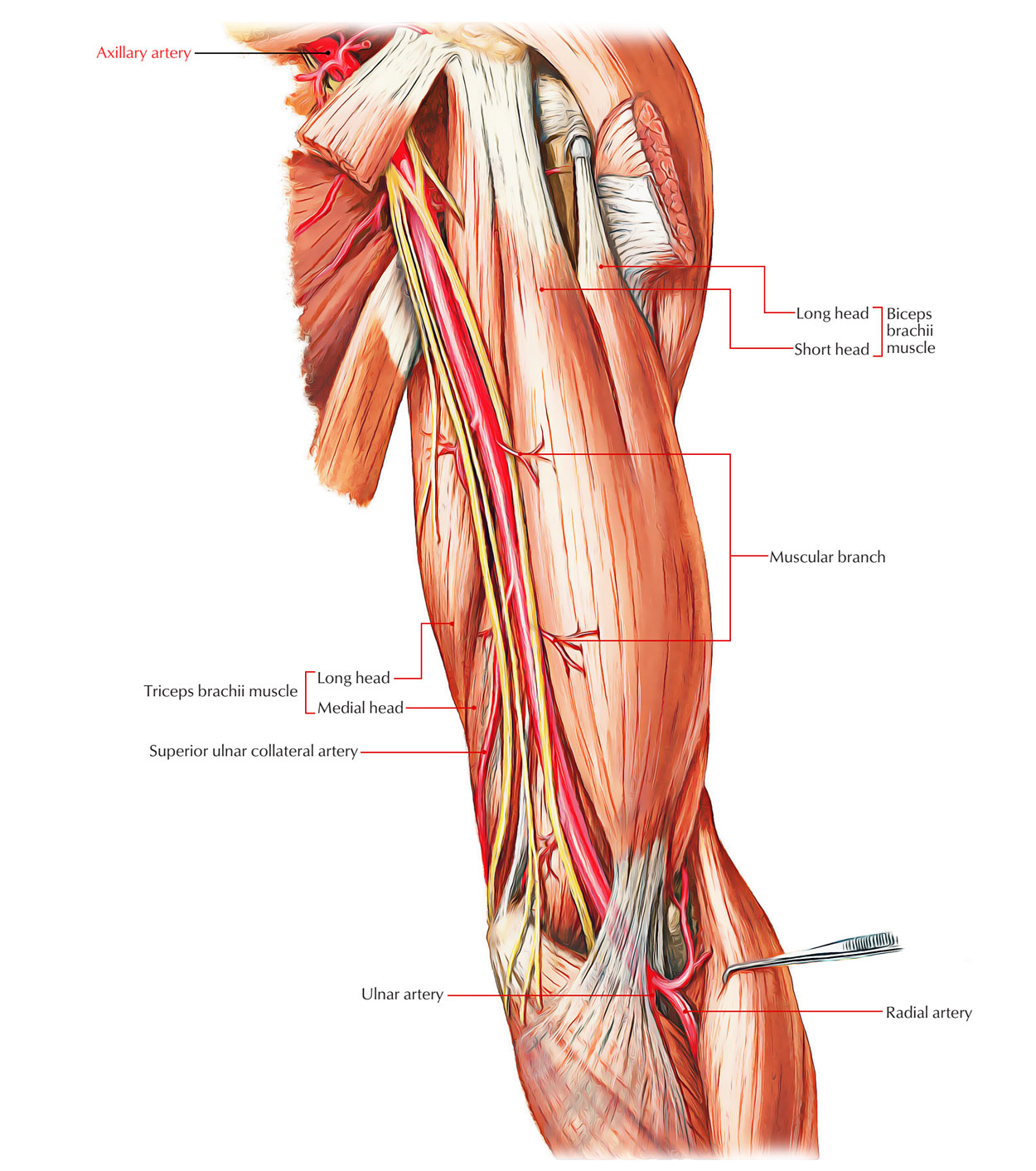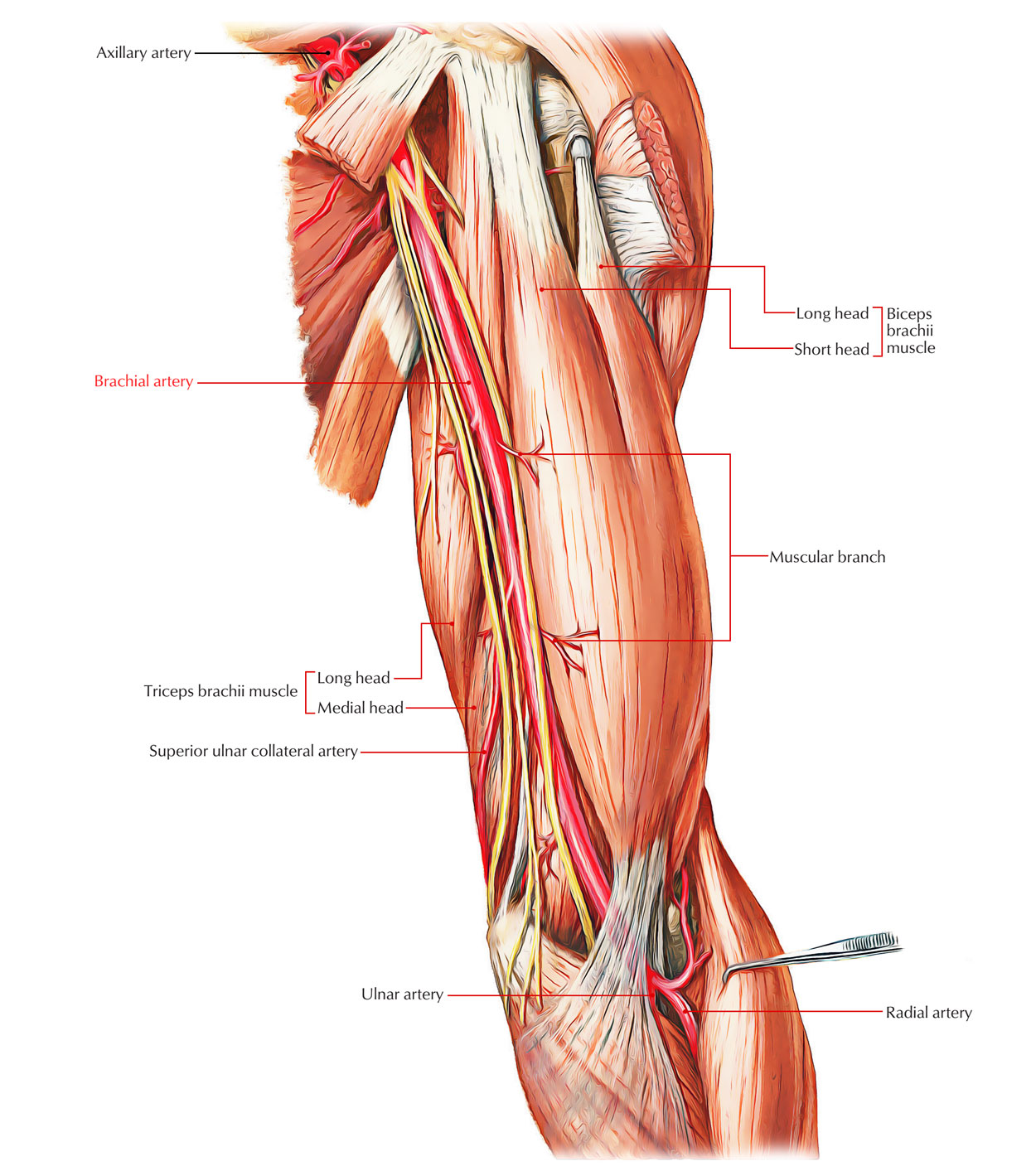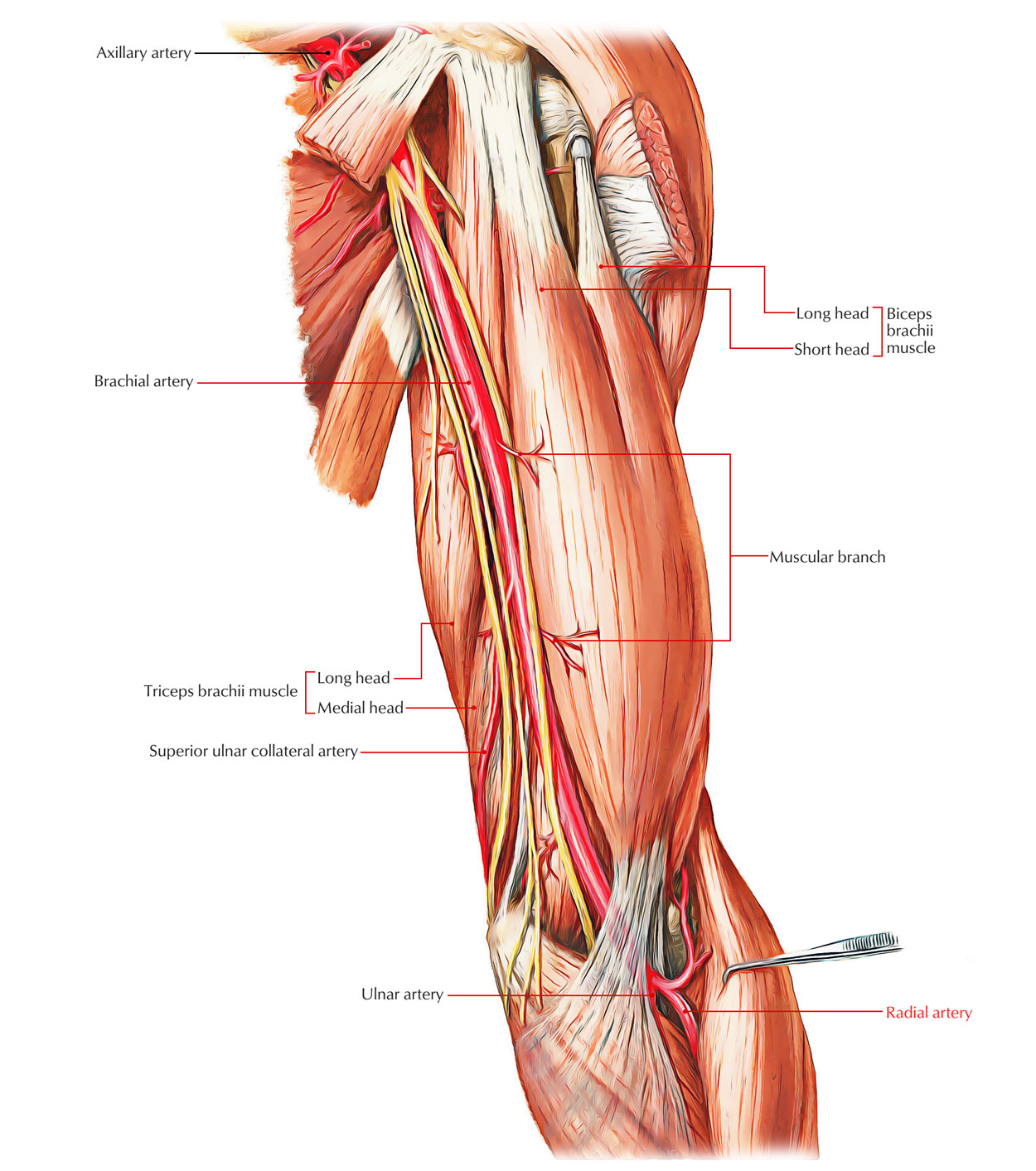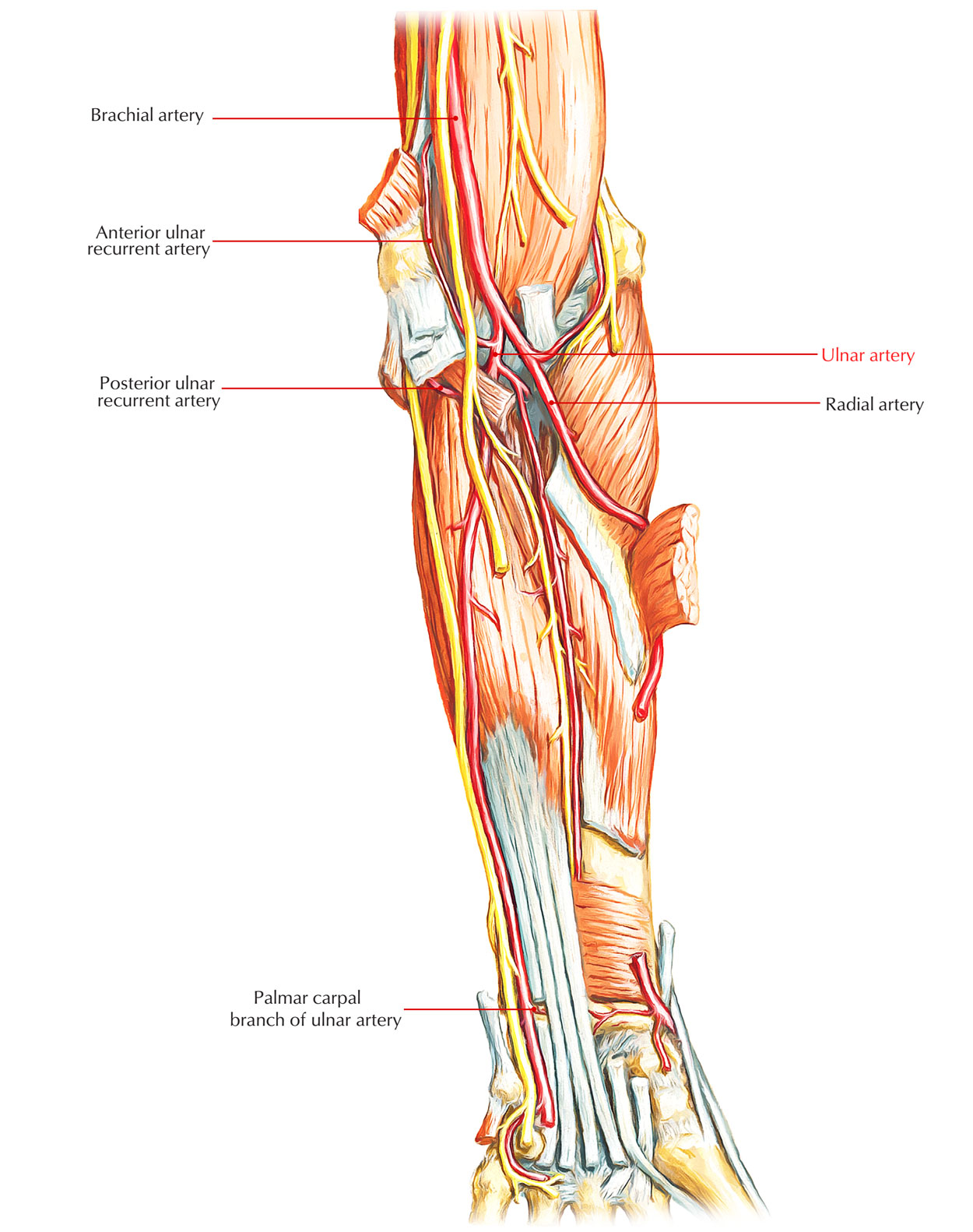The blood to the upper limb is supplied by 4 major arteries: axillary, brachial, radial, and ulnar. The subclavian artery is followed by the axillary. Its name is changed to the brachial artery at the lower border of the teres major muscle. The brachial artery continues down the arm and just distal to the elbow joint, it splits into radial and ulnar arteries, which follow the bones, following which they are named. The radial artery ends by forming the deep palmar arch in the hand, and the ulnar artery terminates by creating the superficial palmar arch. Let’s have a brief look at the above-mentioned arteries.
Axillary Artery
The axillary artery supplies blood to the shoulder region and the walls of the axilla as well as to the distal parts of the upper limb.

Arteries of the Upper Limb: Axillary Artery
It is divided by pectoralis minor into three parts, it is as follows:
- The first part is proximal to the pectoralis minor.
- The second part is posterior to the pectoralis minor.
- The third part is distal to the pectoralis minor.
During its path through the axilla, Pectoralis minor crosses it on its superficial aspect dividing it into three parts. The axillary vein is medial to the artery and around the second part of the artery, the cord of brachial plexus are arranged; the lateral cord being lateral, the medial cord medial, and the posterior cord behind.
Brachial Artery
The brachial artery is responsible for the blood supply to the posterior compartments of the arm. It can be seen as the continuation of the axillary artery at the lower border of teres major.

Arteries of the Upper Limb: Brachial Artery
In the proximal arm, the brachial artery is located on the medial side. In the distal arm, it moves laterally to assume a position midway between the lateral epicondyle and the medial epicondyle of the humerus.
The Branches of Brachial artery include:
- Nutrient artery to humerus enters the nutrient foramen of humerus located near the insertion of coracobrachialis.
- Profunda brachii artery (largest and first branch).
- Muscular branches to the muscles of the anterior compartment of the arm.
- Radial and ulnar arteries (terminal branches).
- Inferior ulnar collateral (or supratrochlear artery) arises near the lower end of humerus
- Superior ulnar collateral artery arises near the middle of the arm and accompanies the ulnar nerve.
Profunda Brachii Artery
- The profunda brachii artery, the largest branch of the brachial artery, enters into and supplies the posterior compartment of the arm. It enters the posterior compartment together with the radial nerve and together they go through the triangular interval, that is created by the shaft of the humerus, the inferior margin of the teres major muscle, and the lateral margin of the long head of the triceps muscle. They then pass along the radial groove on the posterior surface of the humerus deep to the lateral head of the triceps brachii muscle.
- Branches of the profunda brachii artery supplies adjacent muscles and anastomose with the posterior circumflex humeral artery. The artery ends as 2 collateral vessels, which contribute to an anastomotic network of arteries around the elbow joint.
Radial Artery

Arteries of the Upper Limb: Radial Artery
The radial artery is the compact terminal branch of the brachial artery. It commences in cubital fossa at the level of the neck of the radius. It goes downwards to the wrist with lateral convexity. In the upper part, it lies beneath the brachioradialis on the deep muscles of the forearm. It is:
- Just deep to the brachioradialismuscle in the proximal half of the forearm,
- Related on its lateral side to the superfcial branch of the radial nerve in the middle third of the forearm, and
- Medial to the tendon of the brachioradialismuscle and covered only by deep fascia, superfcial fascia, and skin in the distal forearm.
The superficial radial nerve lies lateral to the middle one-third of the radial artery. The radial artery leaves the forearm by winding around the lateral aspect of the wrist to reach the anatomical snuff-box on the posterior surface of the hand.
Ulnar Artery

Arteries of Upper Limb: Ulnar Artery
The Ulnar Artery is the larger of the two terminal branches of the brachial artery. It supplies the medial aspect of the forearm, wrist, and hand. It starts just below the bend of the elbow and goes obliquely downward, reaching the ulnar side of the forearm near about midway between the elbow and the wrist. Ulnar Artery from there runs along the ulnar border to the wrist, where it splits into its two branches: the ulnar dorsal carpal branch and the ulnar superficial branch.
It begins opposite the neck of the radius, around 1 cm below the bend of the elbow and ends into superficial and deep branches in the palm.
In the upper part of its course, it is located deep to superficial flexor muscles. In the lower part of its course, it ends up being superficial and is located between the tendons of flexor carpiulnaris and flexor digitorum superficialis.

 (49 votes, average: 4.76 out of 5)
(49 votes, average: 4.76 out of 5)